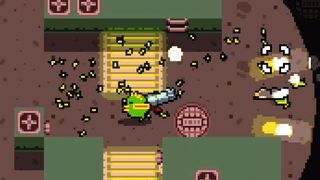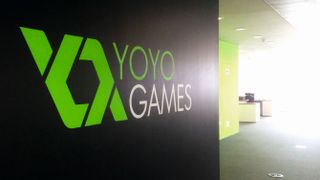
The aim was to make GameMaker commercially viable for developers over the duration of a project, and that work seems to have paid off. Not only are popular and successful games being created with GameMaker now, but YoYo Games itself has expanded considerably since 2007. When they first partnered with Overmars, the GameMaker development team consisted of just two people working in a basement near the University of Abertay. Now YoYo Games employs 30 people in a spacious office overlooking the Firth of Tay. This is still a small team compared to those employed by engine behemoths likeUnity and Unreal, but demand for their product is increasing all the time.
Bar a few extra features, the version of GameMaker: Studio released in 2012 is fairly similar to the one available now. We’ll go into the reasons behind this shortly. But in its current form, what is GameMaker like to use from the perspective of a developer?
Tom Francis is a former PC Gamer writer who became a full-time developer after the release of his first, GameMaker-made game, Gunpoint. Francis was attracted to GameMaker after learning that the original version of Spelunky had been created with it. “I didn’t really do any further research to find out if it was the absolute best choice,” Francis says. “If it was good enough for Derek Yu, the only question was whether it was easy enough for me. And after doing his and GameMaker’s own tutorials, I found it was.”
Gunpoint—a sidescrolling stealth game about spies and hacking—formed gradually out of Francis’ experimentation with the software, initially through the drag-and-drop icons and by following tutorials. “I learnt almost everything else by reading reference docs,” he says. “That’s daunting, so it was great to be able to do it only a bit at a time, and keep working with the very basic icon-based stuff to keep it interesting as I went.”

His experience with GameMaker raises a couple of interesting points. At the time of his initial encounters with it, GameMaker still wasn’t entirely adept at explaining itself to newcomers, especially the transition from drag and drop to GML coding. Indeed, Francis decided to create his own tutorials for GameMaker after experimenting with Unity between projects and finding it a struggle. “By far the most helpful thing I found were Alec Holowka’s videos on it,” Francis says. (Holowka is a Canadian independent developer who in the past has collaborated with Derek Yu). “I realised if I’d had videos like Alec’s for GameMaker, I probably could have jumped straight into the coding side of things and it would have been much quicker.”
Francis also decided to stick with GameMaker for his next game, which is significant considering that a big part of thinking behind GameMaker: Studio was to encourage this. Nor is Heat Signature a typical GameMaker game. It’s a space exploration game that involves large open environments and makes heavy use of procedural generation. Francis had some reservations regarding how well GameMaker would cope, but found it surprisingly accommodating. “I was expecting to have to fake a lot of stuff to make a big space game in GameMaker. Switch you to a separate map mode instead of zooming out, despawn anything off-screen, have a generic infinite universe instead of anything with persistent places. But actually it’s handled it all rather well."
With Studio’s attempt to professionalise GameMaker a success, the main ambition now is to modernise it. Overmars programmed GameMaker in a language called Delphi. “It’s effectively an engine that has grown up from 1999,” says Dailly. “So the codebase is just spaghetti inside. Change one thing over here, five things break over there. You try to fix them and another twenty things break.”
The biggest gaming news, reviews and hardware deals
Keep up to date with the most important stories and the best deals, as picked by the PC Gamer team.
Most Popular



